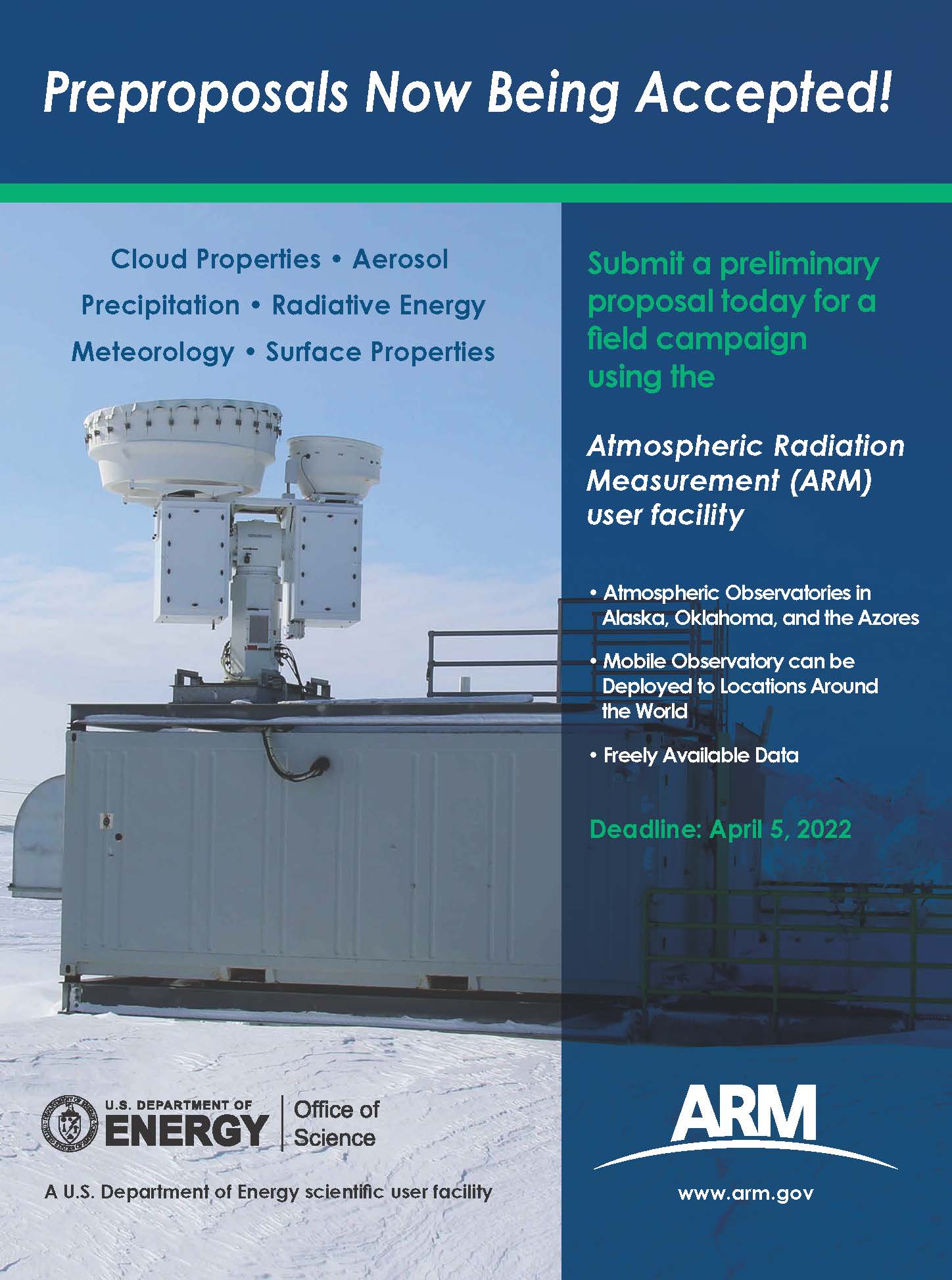This Week: ARM Preproposal Call Deadline
Published: 4 April 2022

The U.S. Department of Energy (DOE) is accepting preliminary proposals from scientists worldwide to use components of the Atmospheric Radiation Measurement (ARM) user facility for field campaigns.
Preproposals are due April 5, 2022, for:
- Use of an ARM Mobile Facility (AMF) – An AMF will be available for deployment beginning as early as December 2023 for a domestic deployment or April 2024 for an international deployment. The actual start dates will be dependent on the complexity of the deployments. The core set of instruments available for this deployment will be very similar to the set currently deployed for the Surface Atmosphere Integrated Field Laboratory (SAIL) field campaign excluding the high spectral resolution lidar (HSRL) and scanning radars. Investigators interested in requesting a tethered balloon system (TBS) as part of their AMF proposal should include science justification for that platform along with specific information about how the TBS should be deployed to meet science goals, within the constraints provided in the TBS mission guidance.
- Supplemental campaigns – Level 4 campaign proposals to augment an ARM atmospheric observatory will be considered for calendar year 2024.
- Note: ARM Aerial Facility deployments will not be available for this call.
Submit preproposals online through the field campaign preproposal form. Before submitting, read the ARM Field Campaign Guidelines for an overview of processes and requirements.
Feedback on proposals will be given with encourage/discourage decisions by May 3, 2022. Full proposals are due July 1, 2022.
Be sure to check the ARM campaign page for more details, including current campaigns and capabilities, and proposal due dates. Proposed deployments should focus on research that addresses the ARM mission of improving the understanding and representation of clouds and aerosols in earth system models, as well as their interactions and coupling with the Earth’s surface.
Priority will be given to proposals that:
- make comprehensive use of the ARM facilities
- focus on strategic goals of the DOE Biological and Environmental Research (BER) program
- have the ability to improve regional or global earth system models.
Proposals that coordinate with other BER community capabilities (e.g., Environmental Molecular Sciences Laboratory, AmeriFlux Network, Next-Generation Ecosystem Experiments in the Arctic and Tropics, Energy Exascale Earth System Model) or that support the goals of the Global Energy and Water cycle Exchanges (GEWEX) project are encouraged.
From past and current principal investigators, learn how to prepare a successful ARM campaign proposal.
Keep up with the Atmospheric Observer
Updates on ARM news, events, and opportunities delivered to your inbox
ARM User Profile
ARM welcomes users from all institutions and nations. A free ARM user account is needed to access ARM data.


















